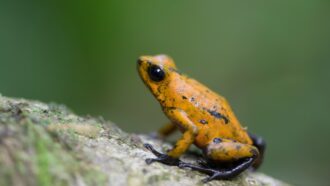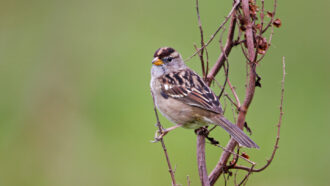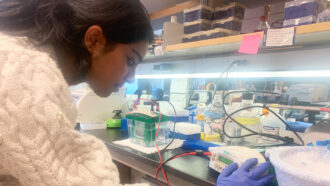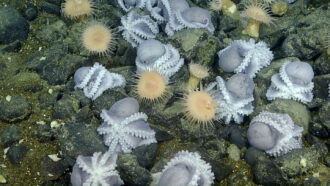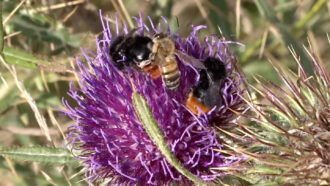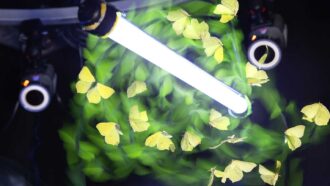When it’s hot, echidnas blow snot bubbles to cool off
The trick helps these adorable spike-balls survive hot temperatures that should kill them
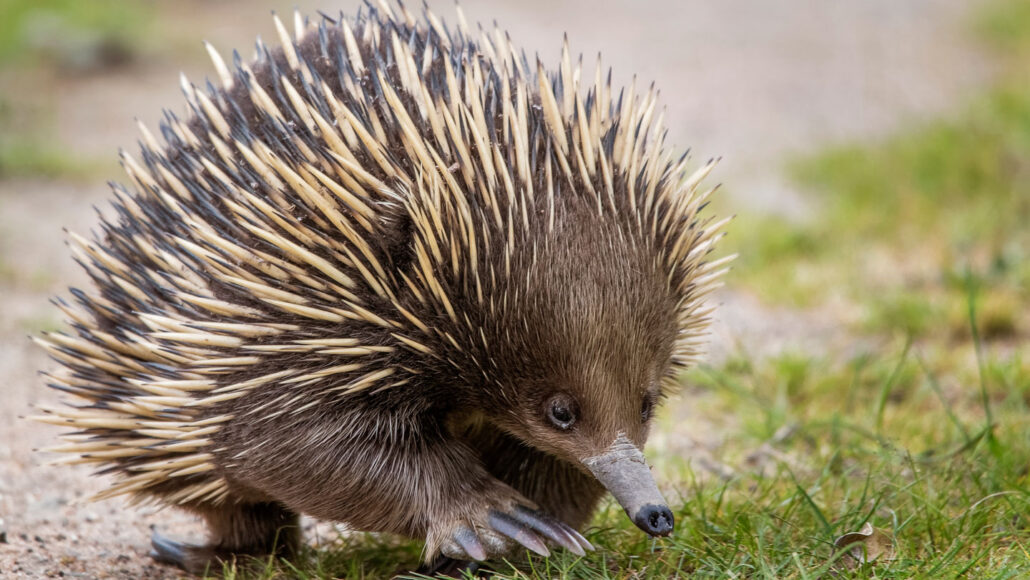
Echidnas are spiky egg-laying mammals that live in Australia and New Guinea. Scientists didn’t think they used evaporation to stay cool, as other mammals do. Now, a new study shows that’s what they do with snot bubbles.
Andrew Haysom/ iStock / Getty Images Plus
By Elise Cutts
Animals cover themselves in all kinds of icky liquids to cool off. Humans sweat. Kangaroos spit. And some birds pee on themselves to survive hot days. Now, scientists know that echidnas do something much cuter — but still slightly gross — to beat the heat. The spine-covered critters blow snot bubbles.
Short-beaked echidnas (Tachyglossus aculeatus) look a bit like hedgehogs. But they’re actually monotremes. Monotremes are egg-laying mammals unique to Australia and New Guinea. Previous studies found that temperatures above 35° Celsius (95° Fahrenheit) should kill echidnas. But echidnas don’t seem to have gotten the memo. They live everywhere from tropical rainforests to deserts to snow-capped peaks. How they handle such a wide range of temperatures has puzzled scientists.

Educators and Parents, Sign Up for The Cheat Sheet
Weekly updates to help you use Science News Explores in the learning environment
Thank you for signing up!
There was a problem signing you up.
Mammals evaporate water to keep cool when the environment is warmer than their bodies, says Christine Cooper. An environmental physiologist, she studies how animals’ bodies adapt to their habitats. She works at Curtin University in Perth, Australia. “Lots of mammals do that by either licking, sweating or panting,” she says. Echidnas weren’t known to do any of those behaviors. But scientists knew that the critters blow snot bubbles when it gets hot.
Cooper teamed up with Phillip Withers. Withers is also an environmental physiologist. He works at the University of Western Australia in Perth. Armed with a camera that sees heat, the researchers searched for echidnas. They drove through nature reserves in Western Australia once a month for a year to film the animals.
Their cameras recorded infrared light, which isn’t visible to human eyes. In infrared, the warmest parts of echidnas’ spiny bodies glowed in oranges, yellows and whites. But the tips of their noses were dark purple blobs. Their noses kept cool.
Here’s how it works. When the snot bubbles pop, they moisten the echidna’s nose. That moisture draws heat from a blood-filled cavity in the echidna’s beak. As the moisture evaporates, it cools the animal’s blood.
Echidnas might also lose heat through their bellies and legs. And their spikes may help keep heat from the air out. The researchers shared their findings January 18 in Biology Letters.
“Finding a way of doing this work in the field is pretty exciting,” says Stewart Nicol. He’s also an environmental physiologist. He works at the University of Tasmania in Hobart, Australia. He wasn’t involved in the study. “You can understand animals and see how they’re responding to their normal environment.” The next step, he says, is to figure out how much heat echidnas really lose through their noses and other body parts.
Monotremes have many traits considered to be primitive, Cooper says. During their evolution, these creatures parted ways with other mammals between 250 million and 160 million years ago. Learning how monotremes handle heat, she adds, might hint at how mammals evolved strategies to control their body temperature.
